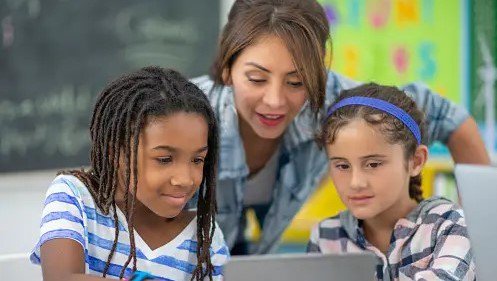When Phillip D. Page, Ed.D., joined our district as new superintendent in 2017, I was in my current position as director of advanced learning, STEM and gifted programs at the time. He came in and talked to all of the departments to find out what our goals were, program status and what kind of help and support we needed.
One of the priorities at the time was STEM implementation, with a focus on what that was going to look like and what kind of support we needed to help coordinate across all of our schools. We have 12 elementary schools, four middle schools, three high schools and a college and career academy. Two years ago, each of those campuses had implemented the foundation for STEM and a district initiative was in place that covered the professional learning, the equipment, the instructional technology, and a mission and vision.
The next logical step was to look at feedback from our community partners/businesses and hold some in-house STEM walks in order to obtain state certification. Doing this in our traditional classroom space wasn’t feasible, so we decided to turn our aging libraries into modern, engaging media centers focused on STEM.
Here’s how we tackled the monumental undertaking of turning 19 different libraries into modern STEM learning hubs:
- Do your research first. We formed a committee that included a board member, a few principals, some instructional leaders and media specialists. We visited some existing STEM labs, did our homework and then took our ideas back to our district leaders.
- Identify the gaps and challenges. The core idea involved transitioning our media centers to increase circulation, expand STEM learning and give community members a place to go when they were on campus. This is something we just weren’t set up for. We have older buildings with aging libraries – in some buildings we even had bookcases coming away from the walls. Students and teachers weren’t interested in spending much time there.
- Stay flexible when roadblocks emerge. When the construction crews started on the media center in our oldest school, it was immediately apparent that we were going to need power outlets, better Wi-Fi and new lighting for that particular media center. Basically, you take the bookcases out and start discovering all sorts of problems. The trick is to tackle those issues one-by-one by installing enough power and Wi-Fi to support modern technology. We also worked with MiEN to select furniture that could be designed and coordinated for those areas; it wasn't just picking pieces out of a catalog.
- Pick reliable, experienced partners. We worked with our furniture partner to furnish the new spaces and our technology partner for the technology side of installation. Both companies held in-person, onsite meetings with us and with all of our media specialists. They met with us personally and when they couldn't meet in person, the interactions took place virtually or via email/phone. Having these partners alongside us, being transparent and providing a high level of support really added to our project success.
- Make the spaces modern, comfortable and engaging. We picked a selection of furniture that included tiered seating, comfortable chairs, tables for group work and a lot of power stations. The kids overwhelmingly love the big, collaborative tiered seating; they all go in there and sit on the poofs. Students also love being able to plug in their laptops, use the printer, work in groups and conduct research in a very professional-yet-comfortable environment. They know their environments and they have their ownership and buy-in. We also hold a monthly STEM Ambassador Group meeting in the space.
Always Put Your Students First
Our ultimate goal with this project was to give students what they wanted: an updated learning space on campus where they can learn, collaborate, engage, work with mentors and hear from the district’s community partners.
The media center is our collaboration area and where I can present to my groups. They really have ownership of the space and know that this is where they come to conduct research, do their 3D printing and myriad other STEM-related projects.
The centers were also equipped with computer research stations, each of which includes five desktops, a 3D printer and a traditional printer. The district also installed several large presentation boards that can be used by teachers, students (for small group learning) and community partners.
We also have a robotics and maker space, which include all of the instructional technology that's needed to use LEGO robotics and VEX robotics. Students and program mentors can come in and be productive in a space that’s dedicated to these types of STEM activities.
There were so many things that kids were very adamant about, and now we have STEM media centers that are all set up for a high level of collaboration and teamwork. Students have a place to do research, work on their projects, hold or attend presentations and work with one another—something that they just couldn’t do in their traditional classrooms.
About the author
Paula Camp is the Director of Advanced Learning for STEM and Gifted programs in Bartow County School District in Cartersville, Georgia.











